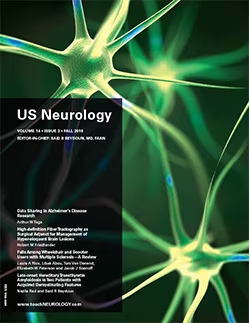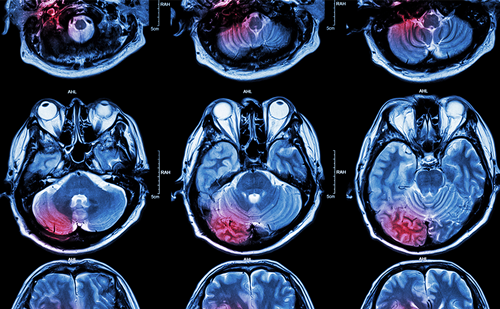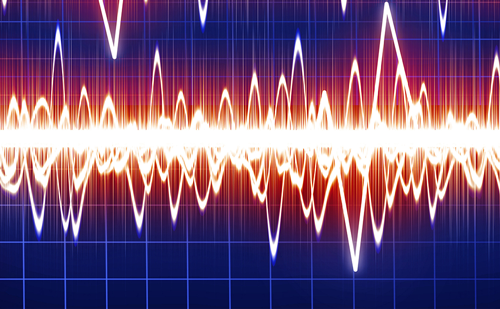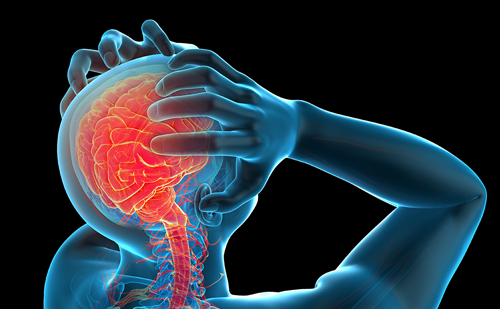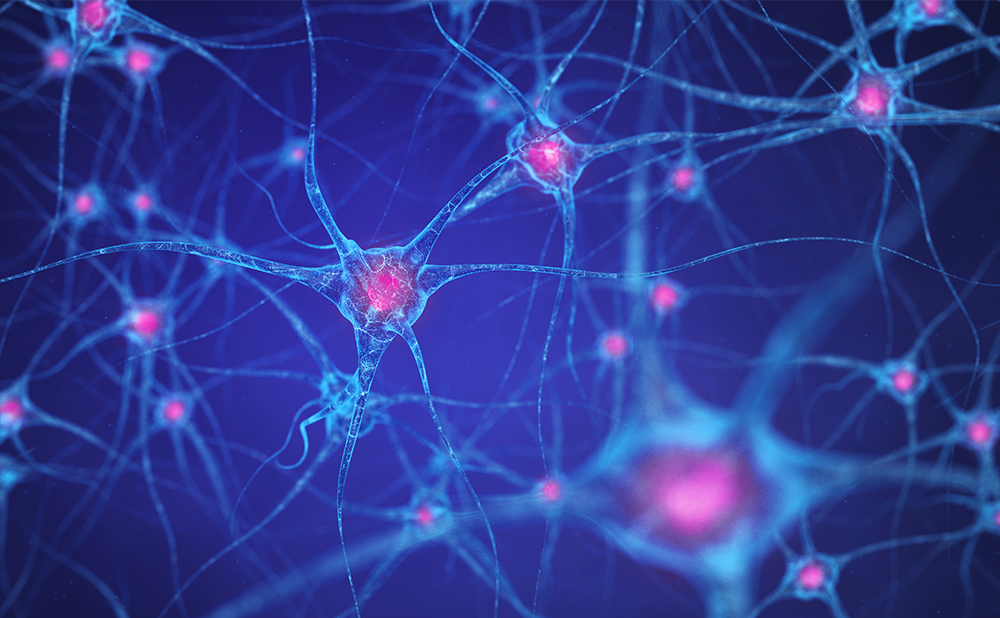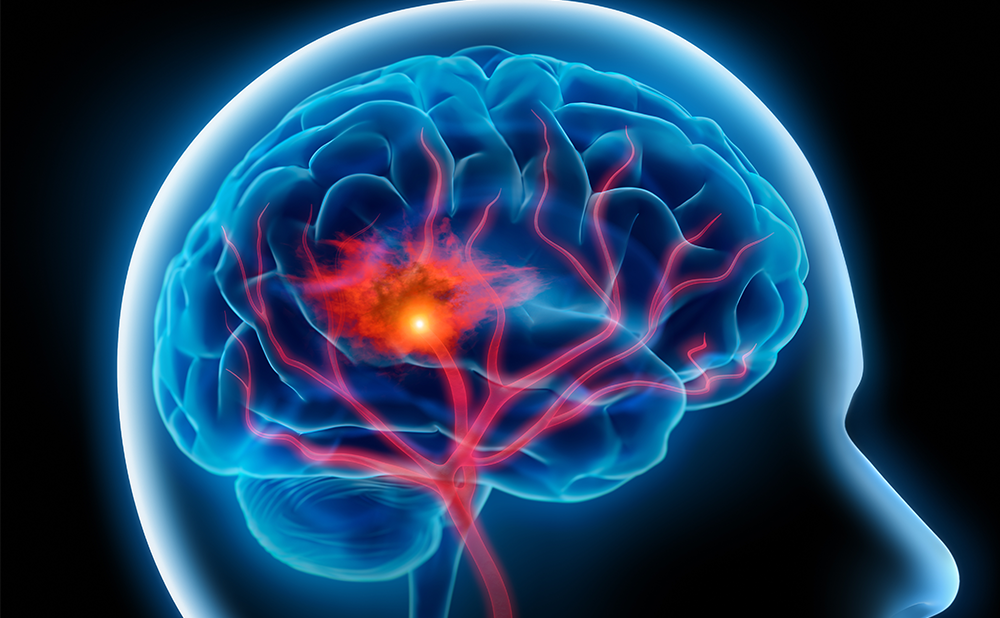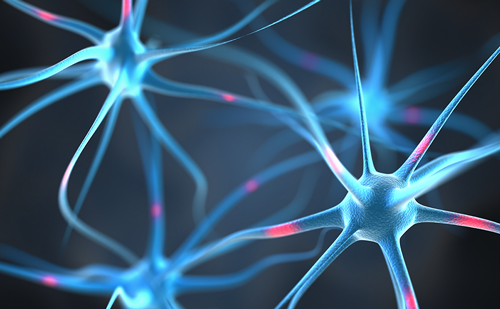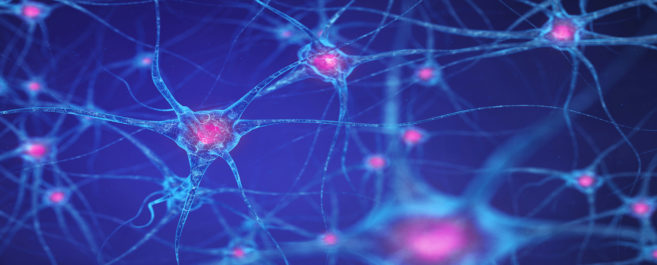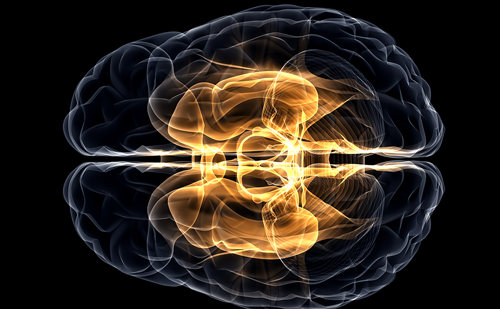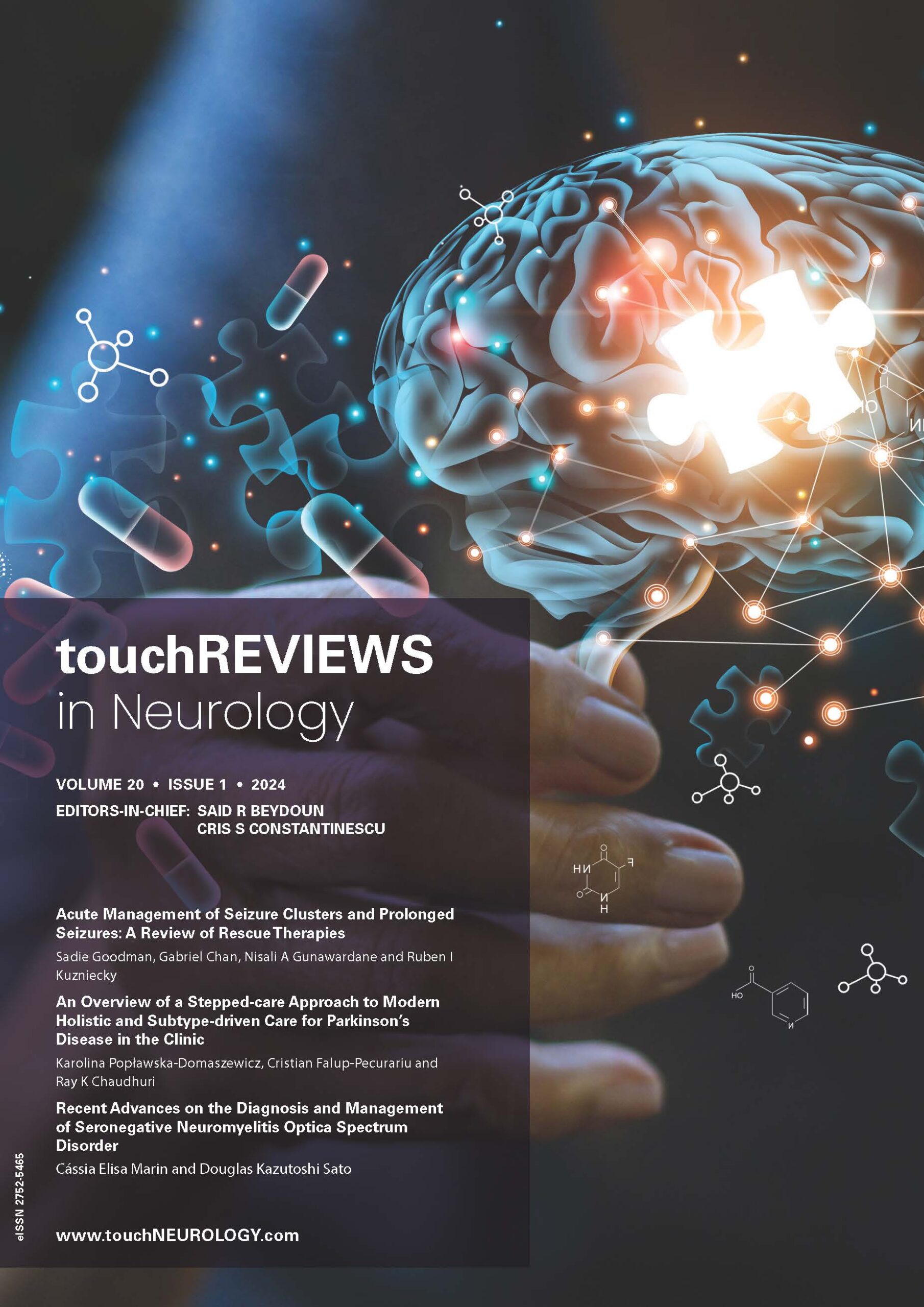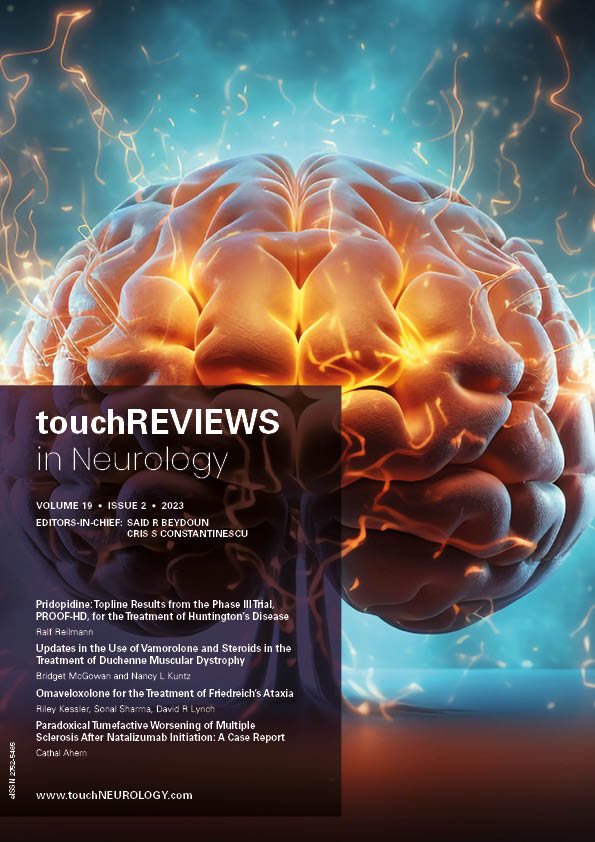US NEUROLOGY – VOLUME 14 ISSUE 2 – FALL 2018
Welcome to the latest edition of US Neurology!
This edition features a wide range of expert interviews, case reports, and original research, exploring the latest developments in neurological disorders. We hope this edition is of interest both to neurologists and the wider medical community. Our expert interviews continue to be a popular feature, providing concise commentaries from key opinion leaders. In an original research study, Mayer et al. explore healthcare resource utilization costs in patients with Duchenne muscular dystrophy covered by government (Medicaid) and non-government (private) health plans. The case reports provide unique insights in diagnosis, therapeutics, and pathophysiology of neurologic disease, particularly in rare disorders where correct diagnosis is often delayed, preventing optimal treatment.
This edition also features a supplement that tells the fascinating story of Dr Geoffrey Guy’s work on gaining the acceptance of the medical community of the therapeutic potential of cannabinoids. The approach, considered highly controversial in 1998, has led to the US Food and Drug Administration approval earlier this year of Epidiolex®, the first cannabis-derived medication to be approved as a prescription medicine in the US.
Enjoy and happy reading!
Welcome to the fall edition of US Neurology. This edition features a wide range of articles that provide an opportunity to review developments in the changing treatment landscape for neurological disorders and share expert opinions that should be of interest both to neurologists and the wider medical community. Our expert interviews continue to be […]
Expert Interviews
This year, the Alzheimer’s Association International Conference (AAIC) took place in Chicago, IL, US, July 22–26, 2018. During this major annual international meeting dedicated to the advancement of Alzheimer’s disease (AD) and dementia science, an impressive array of the world’s leading scientists, clinical researchers, rising-star investigators, clinicians, and the care research community come together […]
There has been an explosion of data in the field of Alzheimer’s disease (AD), not only from clinical studies but also studies that generate hypotheses and opportunities that may accelerate drug development. In order to make optimal use of these data, scientists must share findings across organizations and countries. While many researchers recognize the […]
In the last year, a number of exciting new treatments for migraine have been approved by regulatory authorities. In particular, several monoclonal antibodies have revolutionized every aspect of treatment. In an expert interview, Professor Stewart J Tepper describes these new treatments and speculates on their impact on the management of migraine. Q. What important developments […]
The importance of recognizing and including cognition as a key factor to consider when ensuring comprehensive care for individuals with multiple sclerosis (MS) cannot be over emphasized. Unfortunately, despite it being accepted as a common symptom, cognitive function in MS is still not openly discussed, routinely assessed, or optimally treated. In an expert interview, Rosalind […]
Recently released guidelines on the use of disease-modifying therapies (DMTs) in patients with multiple sclerosis (MS) include guidance on starting, switching, and stopping treatment. The guidelines, which were produced by a multidisciplinary panel and endorsed by the Multiple Sclerosis Association of America and the National Multiple Sclerosis Society, were presented at the American Academy of […]
Cerebral cavernous malformations are commonly found in deep regions of the brain, such as the thalamus and brainstem.1 While posing a significant risk of hemorrage,2 they also present a surgical challenge as the rates of morbidity and mortality are high.1,3 In patients with brain blood vessel malformations, planning the safest approach to surgery is critical. […]
About 85% of strokes are ischemic, and the most severe ischemic strokes are caused by large vessel occlusion due to either artery-to-artery embolism or cardiac embolism. Early treatment is essential to rescue potentially salvageable tissue.1 Until recently, the only proven treatment for acute ischemic stroke was intravenous thrombolysis with recombinant tissue-type plasminogen activator (tPA). […]
Review
Highlights Falls are common among wheelchair and scooter users with multiple sclerosis (MS). Previous research has found that approximately 75% of wheelchair and scooter users with MS report at least one fall in a 6-month period. Falls commonly occur while a wheelchair or scooter user is performing a transfer, reaching for an object, or ambulating […]
Original Research
Duchenne muscular dystrophy (DMD) is a progressive, X-linked recessive neuromuscular disorder, characterized by muscle weakness, wasting, and degeneration starting in early childhood.1,2 DMD is caused by a mutation in the dystrophin gene that leads to an absence of functional dystrophin protein.3 This disorder first affects muscles of the lower body, and progresses to the upper […]
Case Reports
POEMS syndrome is a rare paraneoplastic syndrome characterized by a complex constellation of systemic findings in the setting of a proliferative cell disorder. Named for peripheral neuropathy, organomegaly, endocrinopathy, M-proteins, and skin changes, these findings are predominant among several other associated features of the syndrome. We describe a case in which the diagnosis of POEMS […]
Late-onset Hereditary Transthyretin Amyloidosis in Two Patients with Acquired Demyelinating Features
Hereditary transthyretin amyloidosis (hATTR), formerly known as transthyretin-related familial amyloid polyneuropathy (TTR-FAP), is the most common form of genetic amyloidosis, transmitted as an autosomal dominant trait. V30M is the most common identified mutation in patients with polyneuropathy, with endemic foci in Portugal, northern Sweden, and Japan. However, more than 100 other mutations have been described, […]
Multifocal motor neuropathy (MMN) is a rare motor neuropathy with a reported prevalence range of 0.3–3 cases in 100,000.1 It affects more males than females (2.7:1) and onset usually occurs before 50 years of age.1 The disease can progress to permanent weakness and disability but it is not life-threatening or as disabling as amyotrophic […]
Hemiplegic migraine (HM) has been classified by the International Headache Society under the heading of migraine with aura (1.2). HM (1.2.3) occurs in two forms: familial (FHM 1.2.3.1) and sporadic (SHM 1.2.3.2).1 Migraine attacks are associated with a gradual progression of motor weakness/hemiparesis during the aura phase and where no first- or second-degree relative (parent, […]

Trending Topic
The surge in social media use seems to have become a sign of our times. Social media has ramified into not only our personal lives but, importantly, also our professional lives and will continue to do so in the future.1–4 At the same time, more neurologists resorted to online learning modalities, including podcasts and social media […]
Journal Archive
touchREVIEWS in Neurology is a peer-reviewed, free-to-access, bi-annual neurology journal comprising review articles, case reports, practice guides, theoretical discussions, and original research. It features balanced and comprehensive articles written by leading authorities, addressing the most important and salient developments in the field of neurology.
Latest articles videos and clinical updates - straight to your inbox
Log into your Touch Account
Earn and track your CME credits on the go, save articles for later, and follow the latest congress coverage.
Register now for FREE Access
Register for free to hear about the latest expert-led education, peer-reviewed articles, conference highlights, and innovative CME activities.
Sign up with an Email
Or use a Social Account.
This Functionality is for
Members Only
Explore the latest in medical education and stay current in your field. Create a free account to track your learning.


